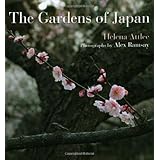
Average Reviews:

(More customer reviews)Are you looking to buy The Gardens of Japan? Here is the right place to find the great deals. we can offer discounts of up to 90% on The Gardens of Japan. Check out the link below:
>> Click Here to See Compare Prices and Get the Best Offers
The Gardens of Japan ReviewJapanese gardens belong to a tradition of artistic landscaping that began over a thousand years ago. Readers with only a vague idea about this subject will be surprised by the mesmerizing images that await them; the serene gardens visited in this publication are both spiritual and beautiful beyond words.The Gardens of Japan is a guided tour through 28 historic landscapes, each one a living work of art. While the background information is comprehensive, it is an easy topic to grasp. This is due to the masterful way in which the author, Helene Attlee, has classified the evolution of the Japanese garden into 5 historic eras. For each period, she explains how the ancient designers created gardens, the function of the garden for its time, and how the designers intended it to be appreciated by visitors.
Japan's garden history begins in the Hein era, from the 8th to the 12th century. In this period, parks were referred to as pond-spring-boat-gardens. Water played a key role in the design because landscape was admired from a pleasure boat.
The second era, called Pure Land, spanned the 11th century. Records dating back to this period include manuals for designing gardens that begin with instructions on how to select a beautifully shaped rock.
Kare-sansui gardens of the third era span the 12th to the 14th century. This period accompanied the growth of Zen Buddhism, which influenced the physical appearance of gardens. Essentially, they were austere and monochromatic compositions depicting abstract versions of natural landscapes. Rock and stone were the primary elements used in designs where meticulously raked gravel symbolized water. Unlike gardens of other eras, where visitors admired nature by moving from one scene to another, Zen gardens were contemplated from a stationary position.
During the 16th to 17th century, the fourth era saw the introduction of Momoyama or the Tea Ceremony Garden. Here the visitor would stroll through an idealized landscape before arriving at a building used for the ceremony. The garden included a twisted path to a tea-house, flanked with naturalistically planted evergreen foliage. Within the path, stepping-stones, placed at specific intervals, controlled the pace of the visitor's movements. The garden contained groves of pruned trees, artificial rolling hills, and elaborate rock arrangements. From inside the tea-house, there was always a framed view to the outdoors that recreated a famous landscape.
The fifth era, the Meiji period, extended from the 19th to the 20th century, when designers incorporated western influences into their gardens. A wide range of foreign plants began to appear, as did the rolling manicured lawns of the English. During this time, many private gardens, belonging to Japanese aristocracy, were converted into public parks.
The author deftly separates the tour of the gardens into 28 chapters so that the reader can study and appreciate one garden at a time. Each chapter explains the historical context in which a garden was created, and is illustrated with superb photographs. There are more than 130 stunning color images in this publication.
Of special interest to this reviewer are two ancient gardens that resonate with a modern architectural idiom. The first, Hosen-In was built as a temple garden about 700 years ago. Its design allows the visitor to admire the garden from inside the temple. The "windows" of the temple are floor to ceiling rectangular openings, reminiscent of picture windows introduced by architect Frank Lloyd Wright in the early 20th century. The second garden is the Katsura-Rikyu. Built in the 17th century, it became an inspiration to other early 20th century architects, such as Gropius and Le Corbusier, who were astonished by the design and described it as "a model of modern architecture."
It is amazing to learn how urban Japanese people, living on the cutting edge of technology, will gather annually in ancient gardens to celebrate the beauty of the spring flowering trees and the fiery foliage of autumn. While these festivals are over 1500 years old, they are as relevant to Japanese society today as they were in antiquity. For those readers who would like to experience the gardens and the festivals first hand, The Gardens of Japan includes a map of garden locations, with contact information both for gardens and for tourist offices.
The landscapes featured in this publication exemplify all that is beautiful and serene about a Japanese garden - a park where "nature has been condensed, reproduced in miniature, and trained to perfection". Photographer Alex Ramsay is to be commended for placing us inside these 28 gardens and filling us with awe.The Gardens of Japan Overview
Want to learn more information about The Gardens of Japan?
>> Click Here to See All Customer Reviews & Ratings Now
0 comments:
Post a Comment